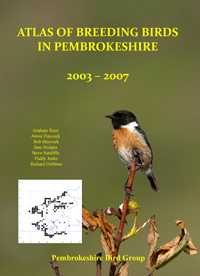Willow Warbler - 2003-07
 Friday, June 29, 2012 at 6:13PM
Friday, June 29, 2012 at 6:13PM This leaf warbler is familiar to many by virtue of its liquid, cascading song. A summer visitor to Britain, wintering in southern Africa, it is normally present in Pembrokeshire from April to September. Scrub, woodland edge and recently planted woodland are its prime habitat, where nests are placed on the ground concealed by vegetation. Willow warblers are normally absent as a breeding bird from the offshore islands, except for the partially wooded Caldey and are not usually found breeding in gardens.
The population estimate which accompanied the 1984-88 survey is now considered to be unsound. Census results from Dyfed Wildlife Trust reserves were applied across the whole county without taking habitat into account, and resulted in an inflated value. Had the findings of the 1988-91 National Atlas been available, a national average value could have been applied and would have resulted in a more realistic estimate of 13,500 pairs nesting in the county.
Comparing the results of the two local surveys indicate a retraction in distribution. The BBS suggests a 20% decrease in Wales between 1994 and 2007, which if applied to Pembrokeshire results in a population estimate of approaching 10,000 pairs nesting by 2007. This accords with the subjective opinion, that Willow Warblers were less numerous during 2003-07 survey than they were during the 1984-88 survey.
Evidence is emerging that this marked decrease is probably due to unfavourable conditions prevailing in the Willow Warblers’ tropical African wintering area.
Graham Rees

Fieldwork 2003-07 (based on 490 tetrads)
Red = breeding confirmed = 47
Orange = breeding probable = 307
Yellow = breeding possible = 15
Total tetrads in which registered = 369 (75.3%)
 GHR,
GHR,  PBBA 2003-7 in
PBBA 2003-7 in  Willow Warbler
Willow Warbler 











